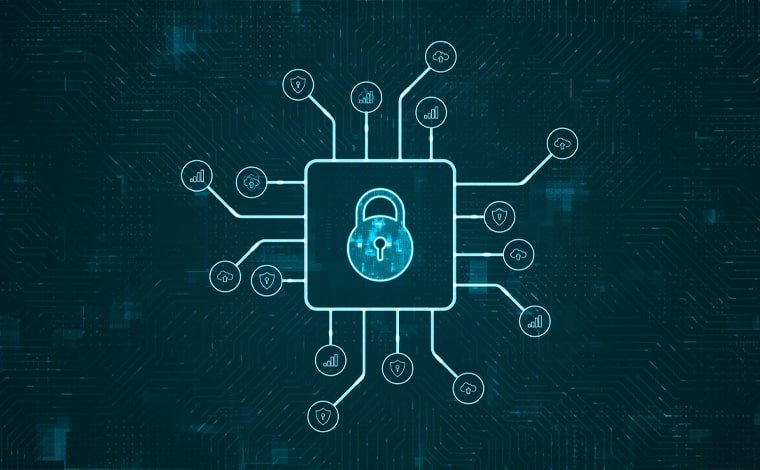
Netelite Automates Every Aspect of Your Security Operations
Netelite automates key security operations, including threat detection and incident response, improving speed, accuracy, and efficiency. By reducing human error and leveraging AI for proactive threat management, it enhances security posture while scaling with growing needs. This allows teams to focus on strategic tasks, ensuring a cost-effective, responsive cybersecurity approach.
The AI-based system enables teams to efficiently address issues related to high-alert incidents
SOC automation streamlines threat detection, response, and alert management, enhancing operational efficiency and reducing response times. By integrating advanced technologies like AI, machine learning, and orchestration, it enables proactive threat management and faster incident resolution. Expanding beyond automation allows SOCs to better coordinate actions, integrate threat intelligence, and continuously improve security posture.


1. Proactive Threat Detection, Response and Predictive Analysis
Automation used by our SOC analysts speeds up threat detection and response, using AI and machine learning to spot anomalies and risks early. It enables immediate, automated actions to contain threats, reducing the risk of damage and ensuring a faster response. By analysing trends, attack vectors, and threat actor behaviour, AI forecast potential risks and provide actionable insights, enabling the SOC to stay ahead of attackers and prevent incidents before they occur.
2. Streamlined Incident Management
Automated workflows handle incident responses, triggering predefined actions such as isolating affected systems or generating reports. This reduces manual bottlenecks and improves recovery times, minimizing the impact of security incidents.
3. Compliance and Reporting
The use of Automation simplifies compliance by automatically generating audit trails and reports required by regulations like GDPR or HIPAA. This reduces the manual workload and ensures accuracy, helping organizations meet compliance standards consistently.
4. Reduced Operational Costs and Resource Strain
By automating routine tasks like alert triage and vulnerability scanning, security teams can focus on more strategic activities. This reduces operational costs and relieves pressure on human resources, improving overall efficiency.

Netelite Automates Every Aspect of Your Security Operations
Netelite automates key security operations, including threat detection and incident response, improving speed, accuracy, and efficiency. By reducing human error and leveraging AI for proactive threat management, it enhances security posture while scaling with growing needs. This allows teams to focus on strategic tasks, ensuring a cost-effective, responsive cybersecurity approach.
The AI-based system enables teams to efficiently address issues related to high-alert incidents
SOC automation streamlines threat detection, response, and alert management, enhancing operational efficiency and reducing response times. By integrating advanced technologies like AI, machine learning, and orchestration, it enables proactive threat management and faster incident resolution. Expanding beyond automation allows SOCs to better coordinate actions, integrate threat intelligence, and continuously improve security posture.
1. Proactive Threat Detection, Response and Predictive Analysis
Automation used by our SOC analysts speeds up threat detection and response, using AI and machine learning to spot anomalies and risks early. It enables immediate, automated actions to contain threats, reducing the risk of damage and ensuring a faster response. By analysing trends, attack vectors, and threat actor behaviour, AI forecast potential risks and provide actionable insights, enabling the SOC to stay ahead of attackers and prevent incidents before they occur.
2. Streamlined Incident Management
Automated workflows handle incident responses, triggering predefined actions such as isolating affected systems or generating reports. This reduces manual bottlenecks and improves recovery times, minimizing the impact of security incidents.
3. Compliance and Reporting
The use of Automation simplifies compliance by automatically generating audit trails and reports required by regulations like GDPR or HIPAA. This reduces the manual workload and ensures accuracy, helping organizations meet compliance standards consistently.
4. Reduced Operational Costs and Resource Strain
By automating routine tasks like alert triage and vulnerability scanning, security teams can focus on more strategic activities. This reduces operational costs and relieves pressure on human resources, improving overall efficiency.

The AI-based system enables teams to efficiently address issues related to high-alert incidents
SOC automation streamlines threat detection, response, and alert management, enhancing operational efficiency and reducing response times. By integrating advanced technologies like AI, machine learning, and orchestration, it enables proactive threat management and faster incident resolution. Expanding beyond automation allows SOCs to better coordinate actions, integrate threat intelligence, and continuously improve security posture.
1. Proactive Threat Detection, Response and Predictive Analysis
Automation used by our SOC analysts speeds up threat detection and response, using AI and machine learning to spot anomalies and risks early. It enables immediate, automated actions to contain threats, reducing the risk of damage and ensuring a faster response. By analysing trends, attack vectors, and threat actor behaviour, AI forecast potential risks and provide actionable insights, enabling the SOC to stay ahead of attackers and prevent incidents before they occur.
2. Streamlined Incident Management
Automated workflows handle incident responses, triggering predefined actions such as isolating affected systems or generating reports. This reduces manual bottlenecks and improves recovery times, minimizing the impact of security incidents.
3. Compliance and Reporting
The use of Automation simplifies compliance by automatically generating audit trails and reports required by regulations like GDPR or HIPAA. This reduces the manual workload and ensures accuracy, helping organizations meet compliance standards consistently.
4. Reduced Operational Costs and Resource Strain
By automating routine tasks like alert triage and vulnerability scanning, security teams can focus on more strategic activities. This reduces operational costs and relieves pressure on human resources, improving overall efficiency.
